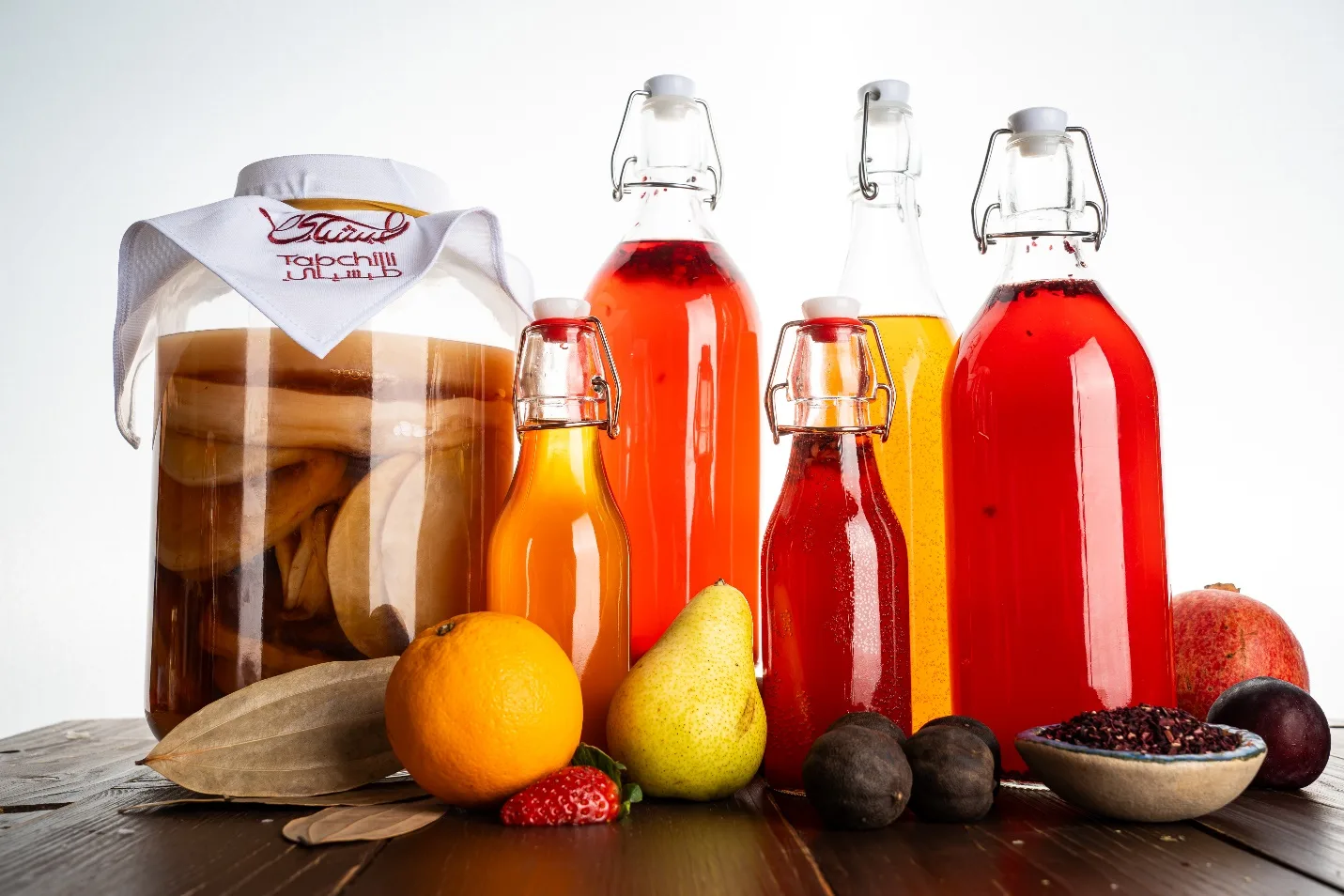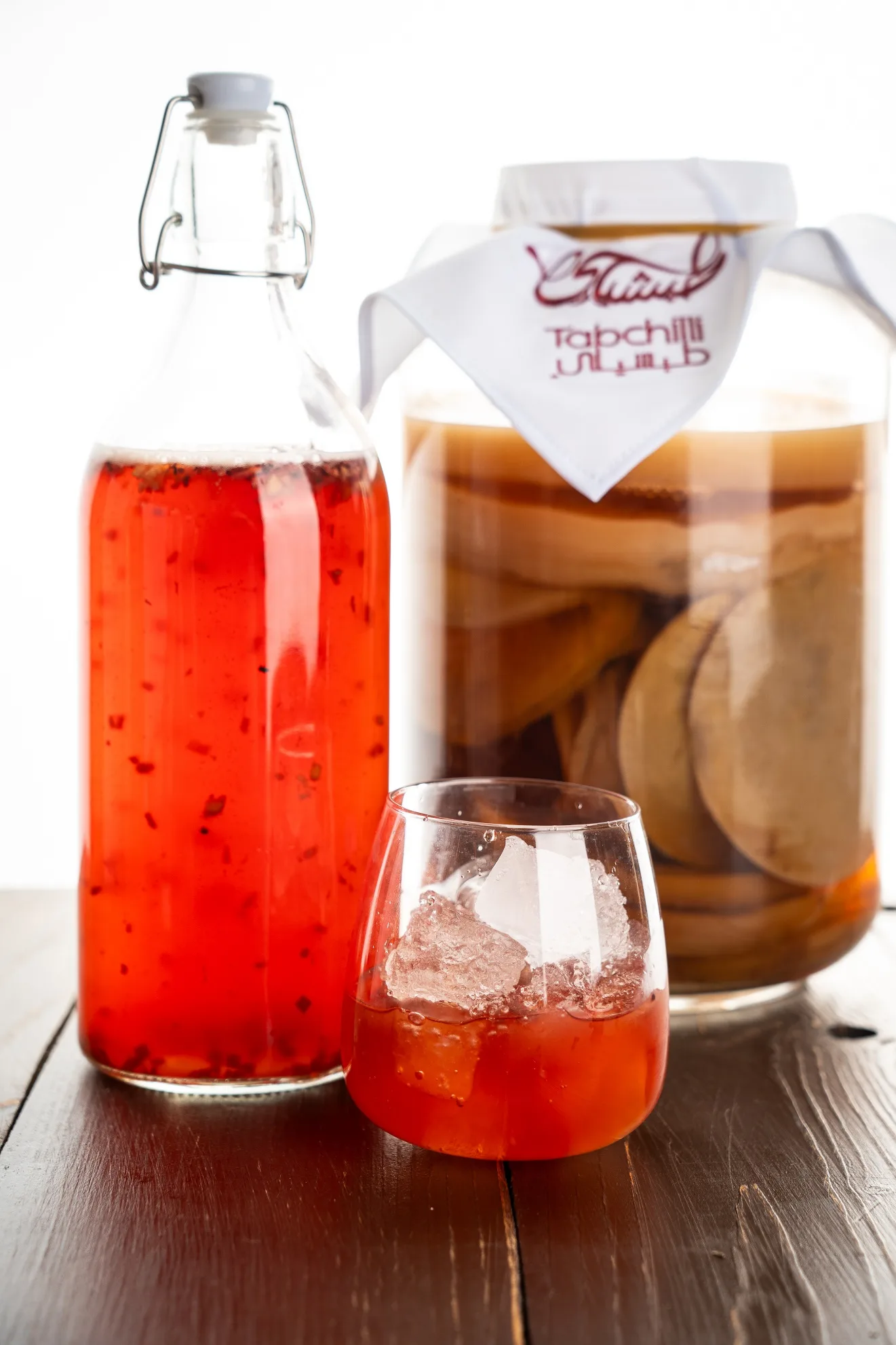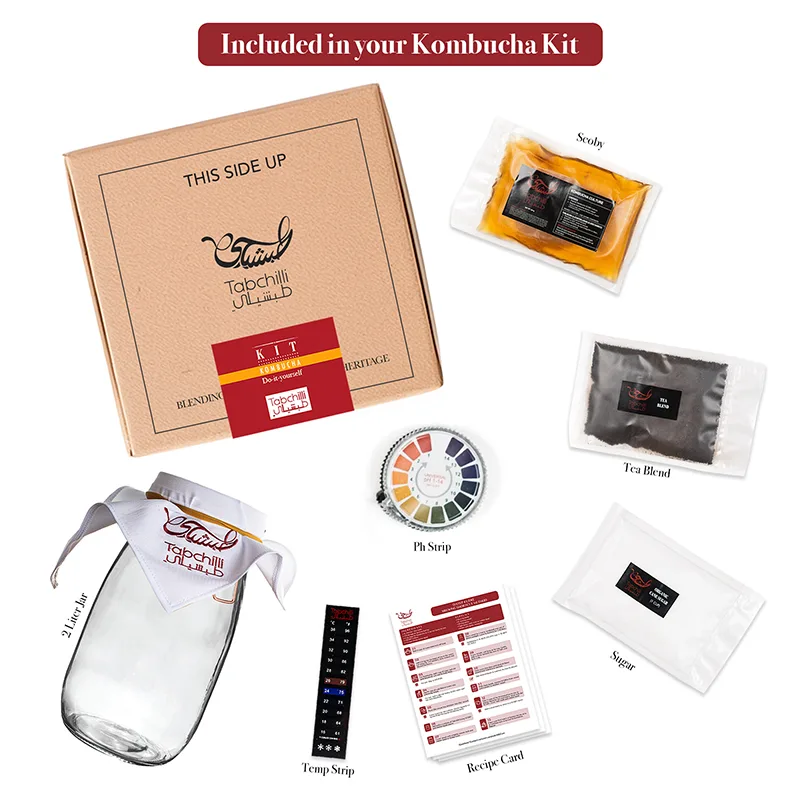Kombucha, the fizzy and tangy fermented tea, is more than just a health drink—it’s a canvas for endless flavor possibilities. Once your first fermentation is complete, it’s time to get creative and transform your kombucha into a delicious, personalized beverage. This process, known as
second fermentation, allows you to experiment with a variety of flavors using fruits, herbs, spices, and even flowers.

However, it’s crucial to ensure safety during this process. If not done properly, carbonation levels can increase too much, leading to potentially dangerous bottle bombs. This guide will help you navigate the flavoring process while keeping safety in mind.
And for those looking to get started from scratch, Tabchilli is here to help. You can learn how to make your own kombucha with us, or even purchase a DIY kombucha kit to begin your home-brewing journey. We have everything you need, from high-quality SCOBYs to complete brewing kits!
1. What You Need for Flavoring Kombucha
Before diving into the flavoring process, make sure you have these essentials:
1. Brewed Kombucha: You’ll need freshly brewed kombucha from the first fermentation stage, ideally around 7–10 days old.
2. Glass Bottles with Lids: Use airtight glass bottles to trap carbonation and create fizzy, flavorful kombucha. Sturdy, pressure-resistant bottles are essential to avoid breakage.
3. Flavor Ingredients: Choose from fresh fruits, fruit juices, herbs, spices, or edible flowers.
4. Funnel: For easy pouring of kombucha and ingredients into the bottles.
5. Optional: Cheesecloth or Strainer: Useful for removing seeds or herb pieces after fermentation.
2. How to Flavor Kombucha: Step-by-Step Process
Step 1: Complete the First Fermentation
Ensure your kombucha has finished its first fermentation. It should taste tangy and slightly sweet, with a bit of effervescence. Remove the SCOBY and around 1–2 cups of kombucha to set aside as a starter for your next batch.
Step 2: Choose Your Flavors
Choosing your flavors is the most exciting part. Here are some popular options:
1. Fruits: Fresh berries, citrus, apples, mango, pineapple, or even frozen fruit.
2. Herbs and Spices: Ginger, mint, basil, cinnamon, vanilla bean, and rosemary.
3. Flowers: Hibiscus, lavender, chamomile, or rose petals.
4. Juices: Freshly squeezed orange, pomegranate, or cranberry juice.
The key is to use fresh, high-quality ingredients. Experiment with different combinations, but avoid oils or extracts that can hinder fermentation.
Step 3: Add Flavors to the Bottles
i. Place the chosen fruits, herbs, or spices directly into clean, dry glass bottles.
ii. For fruit, chop it into small pieces to release the juices, enhancing the flavor and carbonation.
iii. Add 1–2 tablespoons of chopped fruit or 2–3 inches of fresh ginger per 16-ounce bottle. Adjust according to your flavor preference.
iv. If using herbs, lightly bruise them to release their aromatic oils.

Step 4: Pour in the Kombucha
Using a funnel, pour your brewed kombucha into the bottles, leaving about 1–2 inches of headspace at the top. This room allows for gas buildup and prevents the bottles from bursting.
Step 5: Seal and Store for Second Fermentation
i. Seal the bottles tightly with lids.
ii. Store the bottles at room temperature for 2–5 days to let the second fermentation take place.
iii. Check daily and burp the bottles (open the lid slightly) to release excess pressure—this step is crucial for preventing bottle bombs.
Step 6: What Are Bottle Bombs and How to Prevent Them?
A bottle bomb occurs when kombucha builds up too much carbonation in a sealed bottle, causing it to explode. This can happen for a variety of reasons, including:
1. Too Much Sugar: Excess sugar in the flavoring ingredients (such as fruit juices or sweet fruits) can lead to a rapid increase in carbonation.
2. Over-Fermentation: If bottles are left at room temperature for too long without “burping,” the pressure can become dangerous.
3. Improper Bottles: Using weak or non-pressure-resistant bottles can lead to breakage under high carbonation.
How to Prevent Bottle Bombs:
1. Use Sturdy Bottles: Choose high-quality, pressure-resistant glass bottles, preferably swing-top or thick-walled options designed for brewing.
2. Burp the Bottles Daily: Open the bottles once a day to release built-up CO₂. This is especially important if using fruit juices or sweeteners.
3. Don’t Overfill: Always leave 1–2 inches of headspace in each bottle to allow for gas expansion.
4. Monitor Temperature: Keep the bottles in a cool, dark place away from direct sunlight. High temperatures accelerate carbonation.
5. Refrigerate After 2–5 Days: Transfer the bottles to the fridge once you reach your desired flavor and fizz level. Cold temperatures slow down fermentation and prevent over-carbonation.

Step 7: Taste Test and Adjust
After 2–5 days, your flavored kombucha should be ready. Open a bottle and taste it. If the flavors aren’t strong enough, let it sit for another day or two. If it’s to your liking, it’s time to stop fermentation.
Step 8: Refrigerate and Enjoy
Once your kombucha has the perfect flavor, transfer the bottles to the refrigerator to slow down fermentation. Chilling the kombucha also helps enhance the carbonation, giving you that refreshing, fizzy finish.
3. Kombucha Flavoring Ideas
If you’re looking for inspiration, try these unique kombucha flavor combinations:
Fruity Flavors
1. Raspberry-Lemon: Add fresh raspberries and a few slices of lemon.
2. Mango-Ginger: Use chopped mango and a few slices of fresh ginger for a tropical twist.
3. Pineapple-Coconut: Combine pineapple chunks and a splash of coconut water for a piña colada vibe.
Herbal and Floral Flavors
1. Mint-Lime: Fresh mint leaves and lime slices create a mojito-inspired kombucha.
2. Lavender-Blueberry: Add a handful of blueberries and a teaspoon of dried lavender for a calming, aromatic flavor.
3. Basil-Strawberry: Combine sliced strawberries and a few basil leaves for a refreshing summer drink.

Conclusion: Flavor with Confidence
Flavoring kombucha is an art and science that lets you tailor your brew to your personal taste. With so many combinations to choose from, you’ll never get bored. Just remember to prioritize safety—monitor your second fermentation, burp the bottles regularly, and choose sturdy glass containers to avoid the risk of bottle bombs.
And if you’re looking for high-quality SCOBYs or kombucha supplies in Dubai, check out Tabchilli ! You can learn how to brew your own kombucha with us or purchase a DIY Kombucha Kit to start creating your own delicious flavors at home. Get started today and experience the joy of making the best kombucha in Dubai!
1% of each order supports children with juvenile arthritis.